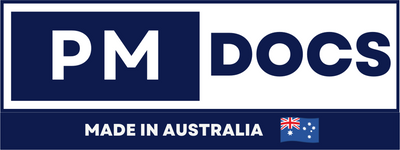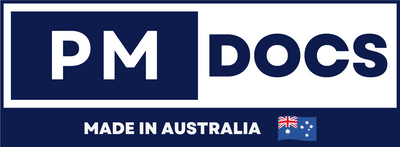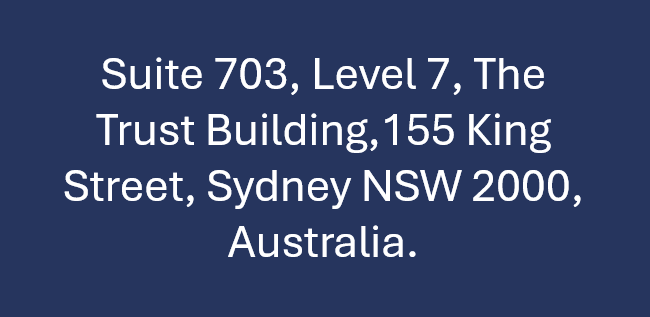ISO Code For Australia: Explained (ISO 3166 Country Code)
ISO Code For Australia: Explained (ISO 3166 Country Code)
When doing business globally, it's essential to understand and utilize internationally standardized codes. One of the most widely recognized is the ISO 3166 country code, which assigns a unique two-letter or three-letter code to each country, dependent territory, or special area. In this blog post, we will delve into the ISO country code for Australia, explaining its structure, usage, and significance in various contexts.

Structure Of ISO 3166 Country Codes
The ISO 3166 standard defines two types of codes for countries:
-
Alpha-2 codes: Two-letter uppercase letters, such as AU for Australia.
- Alpha-3 codes: Three-letter uppercase letters, such as AUS for Australia.
Both code types aim to uniquely identify a country and are used in various applications, like passports, internet domain names, and international trade documentation.
Australia's ISO Country Codes
As mentioned earlier, Australia's ISO country code is:
- Alpha-2: AU
- Alpha-3: AUS
These codes are used in various settings, including:
-
Passports and travel documents: The alpha-2 code "AU" is printed on Australian passports, identity cards, and travel visas to identify the country of origin.
-
Domain names: Australia's country-code top-level domain (ccTLD) for internet domains is .au.
-
Trade and economic interactions: In international trade, shipping, and commerce, the ISO country codes help streamline transactions and communication between businesses and governments.
- UN and other organizations: The United Nations and other international organizations often use ISO 3166 codes to standardize country references in reports, statistics, and diplomatic correspondence.
Usage Of ISO Codes In Australia
Within Australia, the ISO country codes have practical applications:
-
Banking and finance: Australian banks use the country code "AU" in international transactions, such as wire transfers and foreign exchange dealings.
-
Government agencies: Federal, state, and local government departments employ ISO codes to process and document international transactions, agreements, and protocols.
- Business operations: Companies engaging in global trade, manufacturing, or services utilize the ISO codes to firmly identify Australian entities and transactions.
Examples Of ISO Code Usage
Here are a few examples demonstrating the effective use of ISO country codes:
-
International shipment: When an Australian company sends goods to a foreign client, the shipping label would include the country code "AU" to identify the point of origin.
-
Economic reports: The Australian Bureau of Statistics (ABS) uses the ISO 3166 codes in its international trade, investment, and tourism data reports to ensure accurate country-specific statistics.
- Development assistance: The Australian Government Department of Foreign Affairs and Trade (DFAT) employs ISO country codes when allocating aid to developing nations or tracking foreign investment in Australia.
In today's interconnected global economy, the ISO 3166 country code system provides a standardized way to identify and differentiate countries, territories, and special areas. For Australia, the alpha-2 code "AU" and alpha-3 code "AUS" serve as essential identifiers in various contexts, from travel and trade to financial transactions and government communications. Understanding the significance and applications of these codes is crucial for companies, organizations, and individuals seeking to operate effectively in an international setting.
Tables And Lists
Here's a table summarizing the key points:
| ISO Code Type | Code for Australia | Usage Examples |
|---|---|---|
| Alpha-2 code | AU | Passports, travel documents, .au domain |
| Alpha-3 code | AUS | International trade, banking, government reports |
And here's a list of some organizations that rely on ISO country codes:
- United Nations (UN)
- World Bank
- International Monetary Fund (IMF)
- World Trade Organization (WTO)
- International Organization for Migration (IOM)
- Australian Bureau of Statistics (ABS)
- Department of Foreign Affairs and Trade (DFAT)
By grasping the importance and functions of ISO country codes, especially for Australia, we can enhance our comprehension of global interactions and improve our participation in the international community.
ISO Code For Australia: Explained (ISO 3166 Country Code)
Imagine a world without common ways to identify things. Global trade, travel, and even online services would be a mess of confusion. This is where standardized codes step in, giving everyone a clear, shared language. These codes are vital for knowing exactly who or what we are dealing with across borders.
Australia, like every nation, uses a special code to represent itself on the world stage. This is its ISO 3166 country code. You might wonder why these codes matter and what they tell us. They are far more than just random letters or numbers; they hold deep meaning for international communication.
This article will pull back the curtain on Australia's ISO code. We'll explore what this code is, why it's so important, and how it helps Australia connect with the rest of the world. Get ready for a complete look at these essential identification tools.
Understanding ISO 3166: The Global Standard For Country Codes
The International Organization for Standardization, or ISO, creates standards that make life easier and safer. This group brings experts from around the world together. They set common rules for everything, from quality control to shipping container sizes. One of their most helpful standards is ISO 3166.
The purpose of ISO 3166 is simple yet powerful. It provides globally recognized codes for countries and their main regions. This prevents mix-ups when different systems need to talk about the same place. It's like giving every country its own unique, shorthand name.
The Components Of ISO 3166
ISO 3166 is not just one code. It actually has three different parts, each serving a unique role. These distinct codes let us identify Australia in various situations.
ISO 3166-1 Alpha-2: AU
The most common and widely recognized code for Australia is "AU." This is an Alpha-2 code, meaning it uses two letters. Every country gets a unique two-letter code under this system. "AU" was chosen as a simple, direct link to "Australia."
Two-letter codes are favored for their efficiency. They are short, easy to type, and take up little space. Think about how often you see "AU" pop up on websites or forms. This brief code helps speed up digital processes and makes communication clearer worldwide.
ISO 3166-1 Alpha-3: AUS
Beyond the two-letter code, Australia also has a three-letter code: "AUS." This Alpha-3 code offers a bit more detail. While "AU" is great for quick use, "AUS" often gives a clearer visual cue to the country's name.
You might see "AUS" used in specific settings. Things like airline ticketing systems or financial reports sometimes prefer this longer code. It helps avoid confusion in places where two-letter codes might seem too vague. Both codes identify the same country, just with different lengths.
ISO 3166-1 Numeric: 036
Australia also has a three-digit numeric code: "036." This number code works alongside the Alpha-2 and Alpha-3 options. Numeric codes are very useful in specific computer systems or databases.
For example, when character space is limited, numbers can be easier to manage than letters. Some older computer systems or certain data processing tasks prefer numeric codes. The "036" always points directly to Australia, no matter the context.
Why Australia Has An ISO Code: Key Applications
Australia's ISO code is more than just an identifier. It's a foundational tool used in many global activities. These codes keep things running smoothly behind the scenes.
International Trade and Commerce
In the world of international trade, accurate codes are a must. Customs forms, shipping manifests, and invoices all rely on ISO codes. When goods leave or enter Australia, "AU" is stamped on the paperwork. This tells officials exactly where the products are from or where they are going.
For example, a company shipping electronics to Sydney will clearly mark "AU" on its cargo labels. This simple code helps track packages, calculate duties, and ensure fast delivery. It cuts down on errors that could cause delays at borders.
Global Data Management and Information Systems
Databases, maps, and other digital systems use ISO codes to sort information about Australia. Imagine a large global database tracking economic trends. Each data point for Australia would be tagged with "AU" or "AUS." This makes sure the data is accurate and easy to find.
Geographic information systems, or GIS, also rely on these codes. They map out countries and their borders using the ISO standards. This ensures that when you look up data about Australia, it's always linked to the correct location. It's how we keep global information neatly organized.
Internet Domain Names and Geolocation
The internet uses ISO codes, too. The familiar ".au" at the end of Australian websites is a country code Top-Level Domain, or ccTLD. This directly comes from Australia's ISO 3166-1 Alpha-2 code. It immediately tells you a website is tied to Australia.
This connection helps users and search engines identify local content. Businesses in Australia use ".au" to build trust and show their local presence online. It's a small detail that helps shape Australia's identity on the worldwide web.
Official Documentation and Passports
You might not always see the ISO code openly on your passport. But these codes often exist within the underlying systems that manage travel and identity documents. They help link Australian citizens to their country in global databases used by immigration or travel agencies. This makes sure your documents are recognized as Australian, no matter where you travel.
Beyond The Basics: Related ISO Standards And Codes
ISO codes go even deeper than just identifying countries. There are other related standards that help organize information within Australia and about its money.
ISO 3166-2: Subdivisions of Australia
While ISO 3166-1 codes identify countries, ISO 3166-2 dives into the parts within a country. This standard gives unique codes to the main subdivisions, like states or territories. For Australia, this means each state gets its own special tag.
For example, New South Wales is identified as AU-NSW. Victoria uses AU-VIC. Queensland is AU-QLD, and Western Australia is AU-WA. These codes combine Australia's Alpha-2 code with a local two or three-letter code. They are perfect for detailed data sorting or regional shipping logistics.
ISO 4217: Currency Codes
Another important related standard is ISO 4217. This standard sets codes for currencies around the world. Every country's money gets a unique three-letter code. Australia's currency, the Australian Dollar, is known globally as "AUD."
The "AU" part of "AUD" clearly links back to Australia's ISO country code. This makes sure that when you see "AUD," you know exactly which dollar is being talked about. It prevents financial mix-ups when money moves across borders.
The Importance Of Accurate ISO Code Usage For Australia
Using the right ISO codes for Australia is not just a nice-to-have; it's essential. Getting these codes wrong can cause big problems.
Ensuring Global Recognition and Compliance
Businesses and government bodies must use Australia's correct ISO codes. This ensures they follow international rules and avoid errors in trade. Imagine an export shipment delayed because the country code was typed incorrectly. Proper use helps everything comply with global standards. It also makes sure Australia is always seen and recognized correctly by other nations.
Facilitating International Collaboration and Data Exchange
Accurate codes make working with international partners much smoother. Whether it is research data, shared financial records, or joint projects, consistent codes matter. They help systems talk to each other without misunderstanding. This seamless data exchange is key to successful global teamwork.
Actionable Tip: Verifying Your ISO Code Usage
Always double-check the ISO codes you are using for Australia. If you manage a database or fill out international forms, a quick search online can confirm the correct "AU," "AUS," or "036." This simple step can save a lot of trouble down the line and ensures your information is always spot on.
Conclusion
Australia's ISO codes—AU, AUS, and 036—are small but mighty identifiers. They give a clear, universal way to refer to the country in any setting. From two-letter shorthand to three-digit numbers, each code serves a specific need.
These codes underpin countless global operations. They are vital for smooth international trade, accurate data management, and even how Australia appears online. Think of shipping goods or looking at websites, these codes are hard at work.
Always using the correct ISO code for Australia is more than just following rules. It ensures Australia's place in the global economy and information systems. It helps prevent errors, speeds up processes, and builds clearer connections worldwide.




